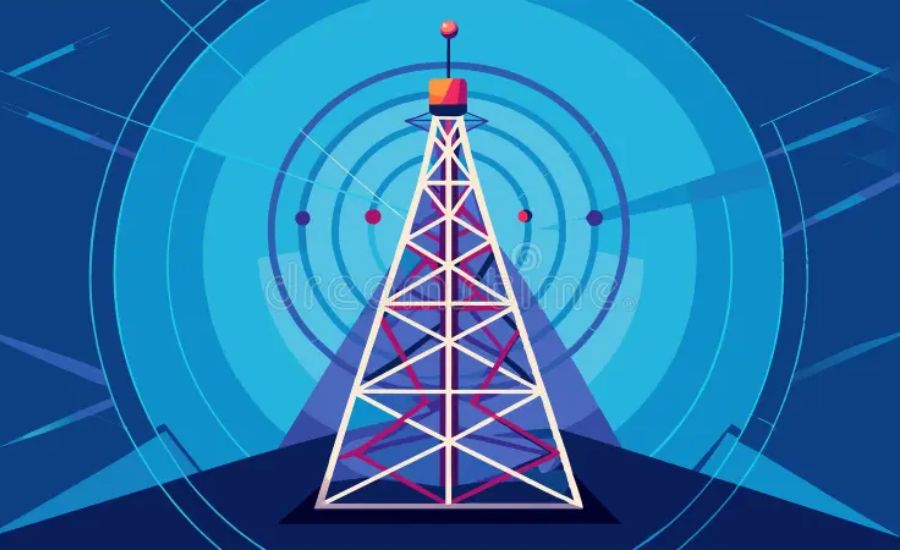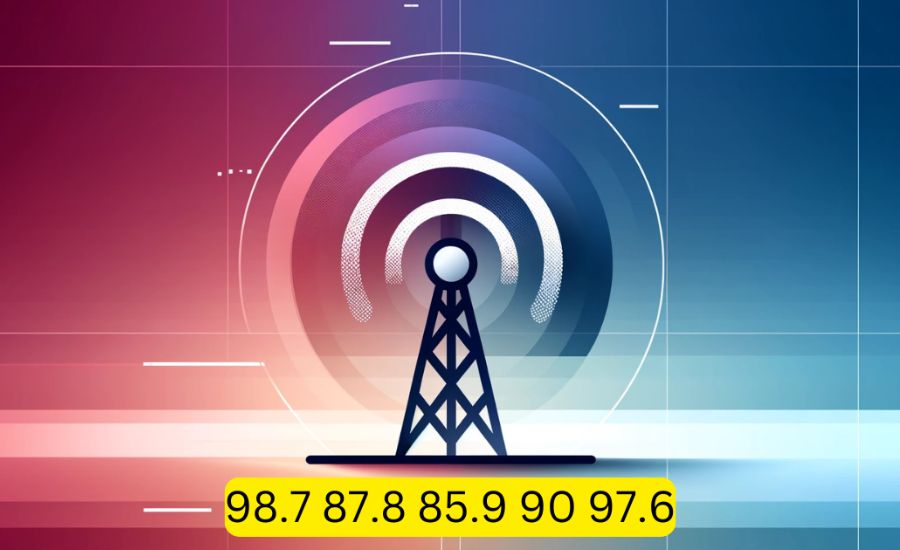98.7 87.8 85.9 90 97.6 Introduction, The 98.7% Benchmark & More
Introduction:
Radio frequencies are the silent pressure in the back of present day verbal exchange, allowing seamless music streaming, real-time news declares, and essential emergency signals. While the numbers 98.7, 87.8, eighty five.Nine, 90, and 97.6 might also appear random in the beginning look, they constitute particular FM radio frequencies that serve as lifelines of enjoyment, way of life, and critical information. More 98.7 87.8 85.9 90 97.6 than simply numerical values, those frequencies act as invisible bridges, wearing voices, song, and critical messages to audiences across the globe.
But have you ever questioned how FM radio works? What makes positive stations available simplest at specific frequencies? Whether you’re using through a serene nation-state or tuning in from a bustling metropolis, radio frequencies play an quintessential position in preserving you informed and entertained.
In this complete manual, we’ll discover the fascinating science at the back of FM radio frequencies, their allocation manner, and the vital position they play in each day existence. From their impact at the track industry to their importance in emergency reaction structures, those frequencies are more than just numbers on a dial—they’re the unseen connectors of our world.
Let’s dive into the magic of FM radio and discover the complicated era that continues us in sync with the world around us.
The 98.7% Benchmark: The Gold Standard of Precision

For example, in the pharmaceutical industry, a 98.7% purity charge in drug formulations is essential to making sure affected person protection and meeting strict regulatory requirements. Even the slightest deviation can lead to destructive health results or failed compliance checks, making meticulous checking out and verification important.
Similarly, in synthetic intelligence (AI) and gadget gaining knowledge of, fashions accomplishing ninety eight.7% accuracy in photo recognition or predictive analytics are considered modern. This stage of precision lets in AI systems to distinguish between complicated styles, improving applications in medical diagnostics, independent motors, and fraud detection.
However, reaching the sort of excessive diploma of accuracy requires advanced technology, rigorous first-rate guarantee, and non-stop refinement. A 1.Three% margin of blunders—though seemingly small—could have good sized results, whether or not in misdiagnosing diseases, wrong monetary predictions, or defective engineering 98.7 87.8 85.9 90 97.6 calculations.
Ultimately, 98.7% is greater than simply a number—it’s a symbol of reliability, agree with, and the pursuit of perfection in fields in which even the smallest errors can have a long way-reaching affects.
87.8%: Balancing Efficiency and Practical Constraints
The 87.8% benchmark is generally referenced in scenarios in which balancing performance and feasibility is vital. For instance, renewable electricity structures may additionally reap an operational ability of 87.8% because of fluctuations in environmental conditions, even as patron delight rankings often hover round this discern as corporations attempt to hold service exceptional within aid constraints.
This percentage underscores the fact that absolute perfection is rarely practicable. Instead, fulfillment lies in optimizing overall performance inside current limitations. To improve beyond this threshold, businesses should consciousness on continuous improvements, centered employee schooling, and bendy techniques that pressure progress without straining available assets. By adopting a dependent approach to incremental growth, companies can make stronger lengthy-time period sustainability at the same time as maximizing efficiency.
85.9%: The Threshold of Competitive Viability

In especially aggressive markets, keeping performance and reliability is crucial for long-time period success. An eighty five.9% overall performance price regularly serves as a vital benchmark for viability, signaling ability dangers if improvements aren’t made. For example, e-commerce companies that fulfill handiest eighty five 98.7 87.8 85.9 90 97.6.9% of their orders may also conflict to retain clients who are seeking quicker and greater dependable alternatives. Similarly, educational institutions with an 85.Nine% graduation price may additionally face worries regarding fairness and scholar aid structures.
This percentage highlights underlying challenges within industries, whether in deliver chain control, instructional accessibility, or product nice assurance. To bridge the ultimate 14.1%, businesses should behavior in-intensity root-purpose analyses, foster collaboration among key stakeholders, and put in force strategic improvements. By addressing those gaps proactively, businesses and institutions can beautify performance, construct agree with, and pressure lengthy-term sustainability.
90%: The Universal Marker of Reliability
A 90% fulfillment charge is broadly recognized as a benchmark for reliability, efficiency, and effectiveness throughout diverse industries. Whether in generation, healthcare, or enterprise operations, this percentage represents a sturdy overall performance wellknown that balances ambition with practicality.
In era, software or cloud services with ninety% uptime are taken into consideration purposeful and reliable, ensuring essential operations can continue with minimum disruptions. However, retaining this stage requires proactive system tracking, routine renovation, and redundancy planning to prevent sudden screw ups.
In healthcare, a vaccine with 90% efficacy is a powerful tool for disease prevention and outbreak manage. It indicates that a majority of people who 98.7 87.8 85.9 90 97.6 receive the vaccine broaden immunity, decreasing transmission costs appreciably. Achieving this standard demands rigorous trying out, continuous improvements, and clinical transparency to build public agree with and regulatory compliance.
Reaching and maintaining a ninety% achievement rate is not any small feat—it calls for consistent innovation, comments-driven enhancements, and a commitment to first-class assurance. Industries that hit this milestone regularly prioritize transparency and consumer engagement, ensuring that clients, stakeholders, and groups trust of their products and services.
Ultimately, a 90% achievement charge is greater than simply various—it signifies a level of excellence that fosters accept as true with, drives progress, and units a foundation for lengthy-term increase and reliability.
97.6%: The Edge of Innovation and Scalability
The determine 97.6% frequently represents a excessive level of performance, scalability, and innovation in industries that depend on contemporary generation and consumer engagement. Whether in telecommunications, business growth, or digital platforms, this percentage indicates the potential to execute bold techniques with precision.
In the telecommunications sector, accomplishing 97.6% community insurance in rural or remote areas is a testament to technological development and infrastructure enlargement. It highlights a company’s capacity to bridge connectivity gaps, ensuring dependable communique and virtual inclusion for underserved communities.
Similarly, in business and startups, a ninety seven.6% person retention fee signals a sturdy product-market healthy, demonstrating that a agency has efficiently created a products or services that meets consumer wishes. Achieving such excessive retention requires purchaser-centric design, continuous innovation, and responsive provider. Companies that attain this milestone often enjoy fast scalability and 98.7 87.8 85.9 90 97.6 market dominance.
However, sustaining this stage of success demands consistent evolution and adaptability. Organizations that come to be complacent risk losing their aggressive part. To hold momentum, they need to put money into agile methodologies, statistics-pushed techniques, and client enjoy enhancements.
Ultimately, 97.6% is extra than a statistic—it represents the high-quality balance between ambition and execution, where agencies can thrive, amplify, and redefine enterprise standards if they stay dedicated to excellence and continuous development.
Facts:
- Radio Frequencies: Numbers like 98.7, 87.8, 85.9, 90, and 97.6 represent FM radio frequencies that facilitate communication, entertainment, and emergency broadcasting.
- FM Radio Functionality: Radio signals act as 98.7 87.8 85.9 90 97.6 invisible channels that transmit music, news, and important messages worldwide.
- 98.7% Benchmark:
- Used in industries like pharmaceuticals, where high purity in drug formulations is essential for safety.
- In artificial intelligence (AI), a 98.7% accuracy rate is considered state-of-the-art for tasks like image recognition and fraud detection.
- 87.8% Benchmark:
- Often seen in renewable energy systems, which may operate at 87.8% efficiency due to environmental fluctuations.
- Customer satisfaction surveys often report 87.8% ratings as companies balance quality service with available resources.
- 85.9% Benchmark:
- Represents a threshold of viability in competitive industries.
- In e-commerce, an 85.9% order fulfillment rate 98.7 87.8 85.9 90 97.6 may cause customer dissatisfaction.
- In education, schools with an 85.9% graduation rate may face scrutiny over equity gaps.
- 90% Benchmark:
- Considered a universal marker of reliability across multiple industries.
- In technology, a 90% uptime rate ensures software or cloud services remain functional.
- In healthcare, vaccines with 90% efficacy are effective in preventing disease spread.
- 97.6% Benchmark:
- Represents high efficiency, scalability, and innovation.
- In telecommunications, 97.6% network coverage reflects advancements in rural connectivity.
- In business, a 97.6% user retention rate 98.7 87.8 85.9 90 97.6 indicates strong customer loyalty and market dominance.
Summary:
This article explores the significance of specific numerical benchmarks across industries, particularly their role in assessing efficiency, reliability, and sustainability. FM radio frequencies such as 98.7, 87.8, 85.9, 90, and 97.6 serve as key connectors of communication, while these same numbers appear in various industries as performance indicators.
- 98.7% represents high precision, particularly in 98.7 87.8 85.9 90 97.6 pharmaceuticals and AI-driven technologies.
- 87.8% is a pragmatic efficiency benchmark, appearing in renewable energy and customer satisfaction ratings.
- 85.9% is seen as a minimum threshold for viability, commonly used in e-commerce order fulfillment and graduation rates.
- 90% is a universal marker of reliability, often referenced in technology uptime and vaccine efficacy.
- 97.6% represents cutting-edge performance and scalability, especially in telecommunications and business retention rates.
The article highlights the importance of incremental improvements, technological advancements, and strategic decision-making to maintain 98.7 87.8 85.9 90 97.6 and surpass these industry benchmarks.
FAQs:
1. What do numbers like 98.7, 87.8, 85.9, 90, and 97.6 mean?
These numbers represent FM radio frequencies but are also commonly used as performance benchmarks in various industries such as pharmaceuticals, technology, customer service, and business scalability.
2. Why is 98.7% considered a gold standard in certain industries?
98.7% represents a near-perfect accuracy rate, crucial for drug purity in pharmaceuticals and AI models in areas like image recognition and fraud detection.
3. What does the 87.8% efficiency rate indicate?
87.8% is a practical benchmark, often appearing in renewable energy systems (where environmental conditions affect output) and customer 98.7 87.8 85.9 90 97.6 satisfaction ratings (where businesses must balance quality and resource constraints).
4. Why is 85.9% seen as the threshold of viability?
An 85.9% rate often signals a critical point where businesses or institutions must improve to remain competitive. It is seen in e-commerce order fulfillment rates and graduation statistics, where any lower rate may raise concerns about reliability 98.7 87.8 85.9 90 97.6 and success.
5. What makes a 90% benchmark significant?
90% is a widely accepted standard for reliability and efficiency across industries. For example, software and cloud services aim for 90% uptime, while vaccines with 90% efficacy are effective in disease prevention.
6. How does a 97.6% benchmark reflect industry leadership?
97.6% is associated with high performance and innovation 98.7 87.8 85.9 90 97.6. In telecommunications, it reflects strong network coverage, while in business, a 97.6% user retention rate indicates a well-received product or service.
7. How can companies improve their efficiency beyond these benchmarks?
Organizations can enhance their efficiency by:
- Investing in advanced technology for automation and optimization.
- Providing employee training to reduce errors and increase productivity.
- Implementing strategic improvements such as better resource management and customer engagement.
8. Why is perfection unattainable in most industries?
Achieving a 100% success rate is rare due to factors like human error, environmental constraints, and unpredictable market conditions. Instead, businesses aim to optimize performance within realistic constraints.
9. How do benchmarks like these impact decision-making?
Companies use these benchmarks to measure performance, set realistic goals, and improve efficiency in areas like product development, customer service, and operational management.
10. What industries rely the most on these performance metrics?
Industries that depend on precision, efficiency, and reliability—such as healthcare, technology, e-commerce, renewable energy, and telecommunications—regularly 98.7 87.8 85.9 90 97.6 use these benchmarks to evaluate success and drive improvements.
Read More Information About News At incrediblestreet.com

